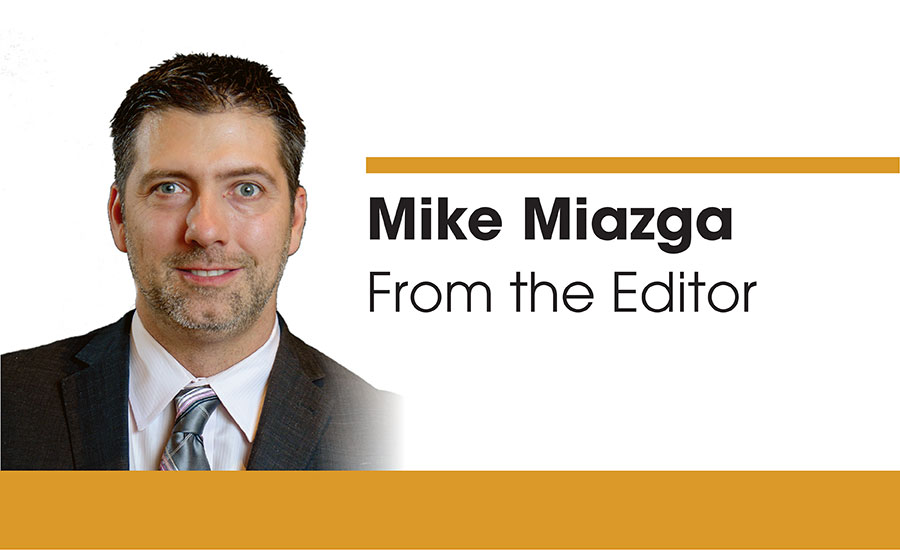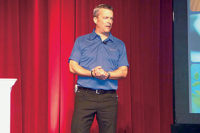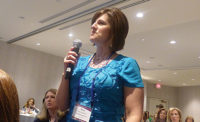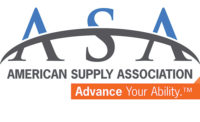I’m starting to sound like a broken record.
That’s because for the last several years during this timeframe I’ve written about the treasure trove of information I come back with after attending Dirk Beveridge’s UnleashWD two-day conference in Chicago.
Beveridge, who many of you likely have read his column in Supply House Times or heard him speak at industry events, takes a different path with his conference, bringing in mainly non-distribution executives to talk about innovation strategies that can be applied to the distribution industry.
This year’s UnleashWD, which saw a major uptick in ASA member companies in attendance, was no exception on the education front (Did you know McDonald’s created Redbox?). Beveridge focused this year’s conference (celebrating its fifth anniversary) more on innovation as it pertains to leadership.
Winsupply COO Monte Salsman kicked the conference off with a bang, talking about how the Dayton, Ohio company uses mistakes as teaching moments. “Mistakes scare people,” he said. “We use mistakes as exercises to learn from and eliminate a culture of fear. Go actively seek out mistakes and teach from them.”
Ashley Good, an innovation catalyst at Fail Forward, noted leaders must not be afraid to take chances to change culture and innovate. “Evaluate the risk of staying the same,” she said. “The risk might go wrong, but what if you do nothing? Risk is real, so talk about it. You will come out stronger in the end.”
Kaihan Krippendorf, CEO of Outthinker, snuck in some bottom-line innovation advice during the conference’s second-day morning session.
He mentioned the McDonald’s at-the-time Redbox experiment and cited a $1 per-day list price for a movie rental that ends up being an average (based on data he recited) of $4.33 per transaction due to customers holding onto the video longer than one day for a variety of reasons. “They created a perception of low price, but in reality it’s a higher price,” he explained. “Look at different ways to price. Improved pricing goes straight to the bottom-line profit. Pricing can be disruptive.”
In terms of company culture, Meridith Simes, the president of the consumer division at The John Maxwell Co., provided an innovative idea of bringing in potential employees for a trial run prior to hiring them. “Put them in that environment and then weed out the people who won’t work in that culture as opposed to letting them go after you hired them because they don’t fit into your culture,” she said.
Shannon Waller, director and teamwork coach at Strategic Coach, stressed paying close attention to areas where employees can most excel. “You can find ‘A’ players if you look for what they are good at,” she said.
Simes said the simple task of eating lunch with employees can help an executive accomplish more as a leader. “Go to lunch with your employees and talk to them about their lives,” she said. “You will start to change the culture because someone on the line was seen going to lunch with the CEO.”
Waller added: “They will get on the bus with you, but you have to create that level of trust.”
Mary Miller, CEO of janitorial services firm JANCOA,
talked about the success of her company via the empowerment of her employees. “If you give people the confidence and encouragement to develop, that’s when innovation occurs,” she said. “As leaders we have a great opportunity to impact other peoples’ lives on a daily basis. You have to care. Don’t focus on hiring someone to do a task. You have to see the humanity in people. Who can you encourage to go after their dreams?”
Perhaps the greatest bit of advice during the two days came from David Griffith, executive director of Episcopal Community Services. It involved two words: muddy boots — a term his father coined relating to leaders getting out on the front lines with their employees.
“Talk to the people in the field closest to the work,” he said. “Listen, ask questions and learn. Find the pain and fix it. Encourage your people to wear muddy boots. Go talk to people who don’t do business with you. It will be an amazing experience. The leader’s job is to make the team great.”
And two more gems to close things out here. The first is from second-day keynote speaker Admiral (ret) James Stavridis. “In leadership, personal contact trumps everything,” he said.
From Outthinker’s Krippendorf, “There are eight parts to a business model and the most important part is people.”
Take a look at your company. Do you have the right people on board and the right culture to grow and innovate in place? If not, what are you waiting for?
This article was originally titled “‘Muddy boots’” in the November 2016 print edition of Supply House Times.










